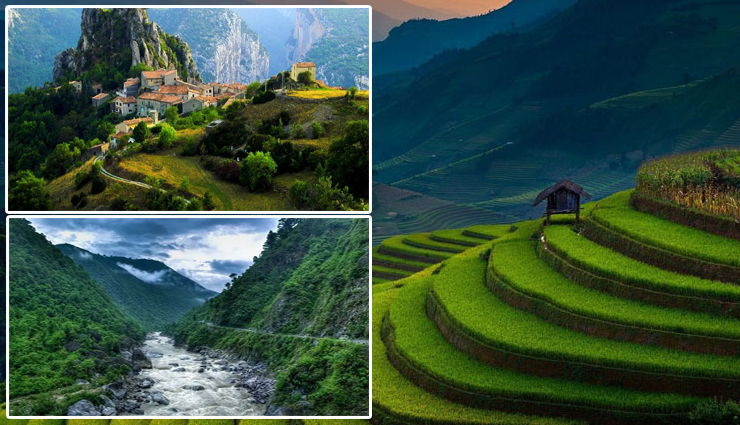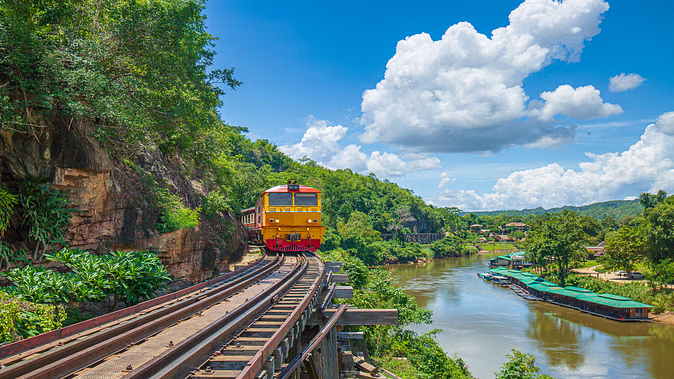Many dams have been built across the country to prevent floods and store water, which provide water for domestic, industrial, and irrigation purposes. Along with this, the water of the dam is also used to generate electricity. India has about 4,000 small and large dams, including a large number of multipurpose dams. But there are some dams in the country that are perfect examples of architectural and civil engineering marvels. Today in this episode, we are going to tell you about some such dams in the country which are known for storing water as well as for tourism. If you want to have a different experience on the holiday, then you can go to take a golden view of the dam mentioned here. Let's know about these dams...

Indira Sagar Dam
The Indira Sagar Dam on the Narmada River in Madhya Pradesh is situated at a height of 92 meters, which is one of the tallest dams in India. The foundation stone of the Indira Sagar Dam was laid on 23 October 1984 by the Late Mrs. Indira Gandhi, former Prime Minister of India while the construction of the main dam started in 1992. This dam plays a primary role in tackling the issue of the water crisis in the area. Indira Sagar Dam has the largest water storage in the country with a capacity of 7,904,454 acre-feet.
Hirakud Dam
Hirakud Dam is one of the longest and largest dams in the world located 15 km from Sambalpur in the state of Orissa on the Mahanadi with a length of about 26 km which is known as the longest dam in India and the longest dam in the world. This dam was constructed in the year 1957 and was done to meet the needs of irrigation. This is Asia's largest man-made Hirakud lake, whose length is 4801 meters, in which 810 million cubic meters of water is stored. Hirakud Dam remains a center of tourist attraction due to its very beautiful appearance.
Tehri Dam
With a height of 260 meters, Tehri Dam is the tallest dam in India and the 8th tallest in the world. With a length of 575 meters, a peak width of 20 meters, and a base width of 1,128 meters, Tehri covers a surface area of 52 square kilometers. It has a reservoir of 2.6 cubic km. The Tehri Dam is the most important hydroelectric water project in the world and draws water from the Bhagirathi and Bhilangana rivers that flow through the Himalayas. In addition to supplying water for irrigation and daily consumption, the dam generates 1,000 MW of hydroelectric power. Tehri Dam was planned in the year 1961 and its construction started in 1978 and was completed in the year 2006.
Bhakra Nangal Dam
Bhakra Nangal Dam is built on the Sutlej River in the Bilaspur district of Himachal Pradesh and this dam is also known as 'Gobind Sagar'. With a height of 225 m and a length of 520 m, the Bhakra Nangal Dam is the largest dam in India and the second-largest dam in Asia. Apart from this, the dam here is one of the highest gravity dams in the world. The preliminary work for the dam started in 1946 while its construction started in 1948. The dam attracts a large number of tourists from all over the country every year. But unfortunately, due to some security reasons, Bhakra Nangal Dam was banned for tourists in the year 2009.

Sardar Sarovar Dam
Sardar Sarovar Dam This dam built on the Narmada River in the state of Gujarat is 138 meters (163 meters including foundation) high and 1210 meters long. The Sardar Sarovar Dam is as famous for its beauty as it is full of controversies. The Sardar Sarovar Dam is the biggest dam among the 30 dams that have been built on the Narmada River, for which there has been a continuous protest. The matter of this reached the Supreme Court but after the decision of the Supreme Court, the matter of the displacement of people was resolved and the construction of the dam was completed. The main purpose of the Sardar Sarovar Dam is to provide water to the drought-prone areas of the Gujarat state and to generate electricity for the Madhya Pradesh state.
Nagarjuna Sagar Dam
The Nagarjuna Sagar Dam is the world's largest masonry dam, built across the Krishna River. The dam is 490 ft high, and 1.6 km long. It has 26 gates and a capacity of 11,472 million cubic meters. The dam has a power generation capacity of 815.6 MW with 8 units. The dam is named after the Buddhist monk Acharya Nagarjuna. The Nagarjuna Sagar irrigates Nalgonda, Guntur, Khammam, and Prakasam districts, covering an area of over 10 lakh acres. The dam was constructed in 1972 by approximately 45,000 to 70,000 workers.

Idukki Arch Dam
The Idukki Dam, located in the Indian state of Kerala, is the first arch dam in India built across the Periyar River in Kerala. Idukki Dam is a double curvature arch dam built between two hills named Kuravati and Kuravan. The Idukki Arch Dam with a height of 550 feet is one of the tallest arch dams in Asia. This dam was constructed along with two other dams at Cheruthoni and Kulamavu. The three dams together have created an artificial lake that is spread over an area of 23 square miles. The stored water is used to generate electricity at the Malmattom Power House, which produces 780 MW of electricity.










